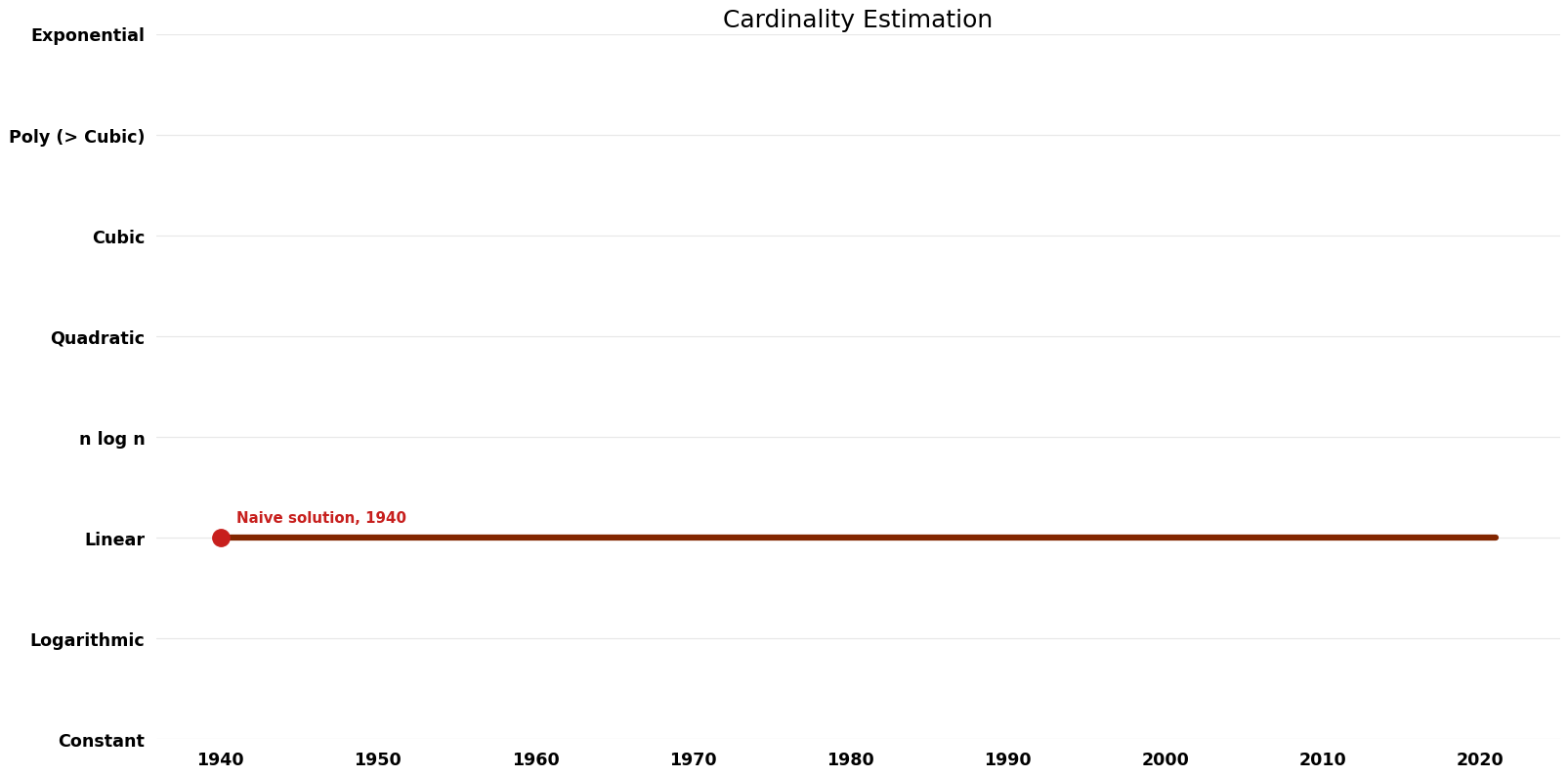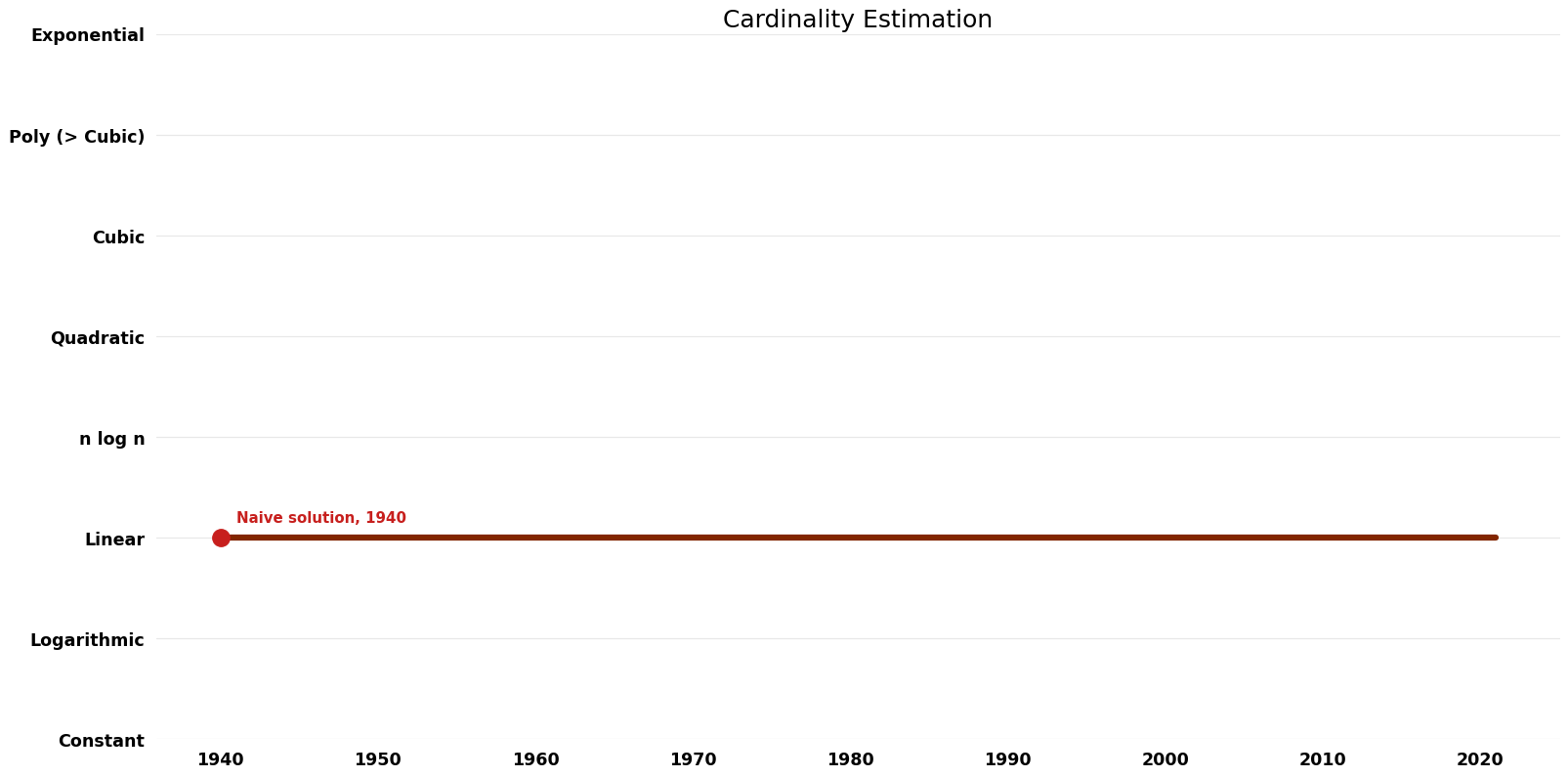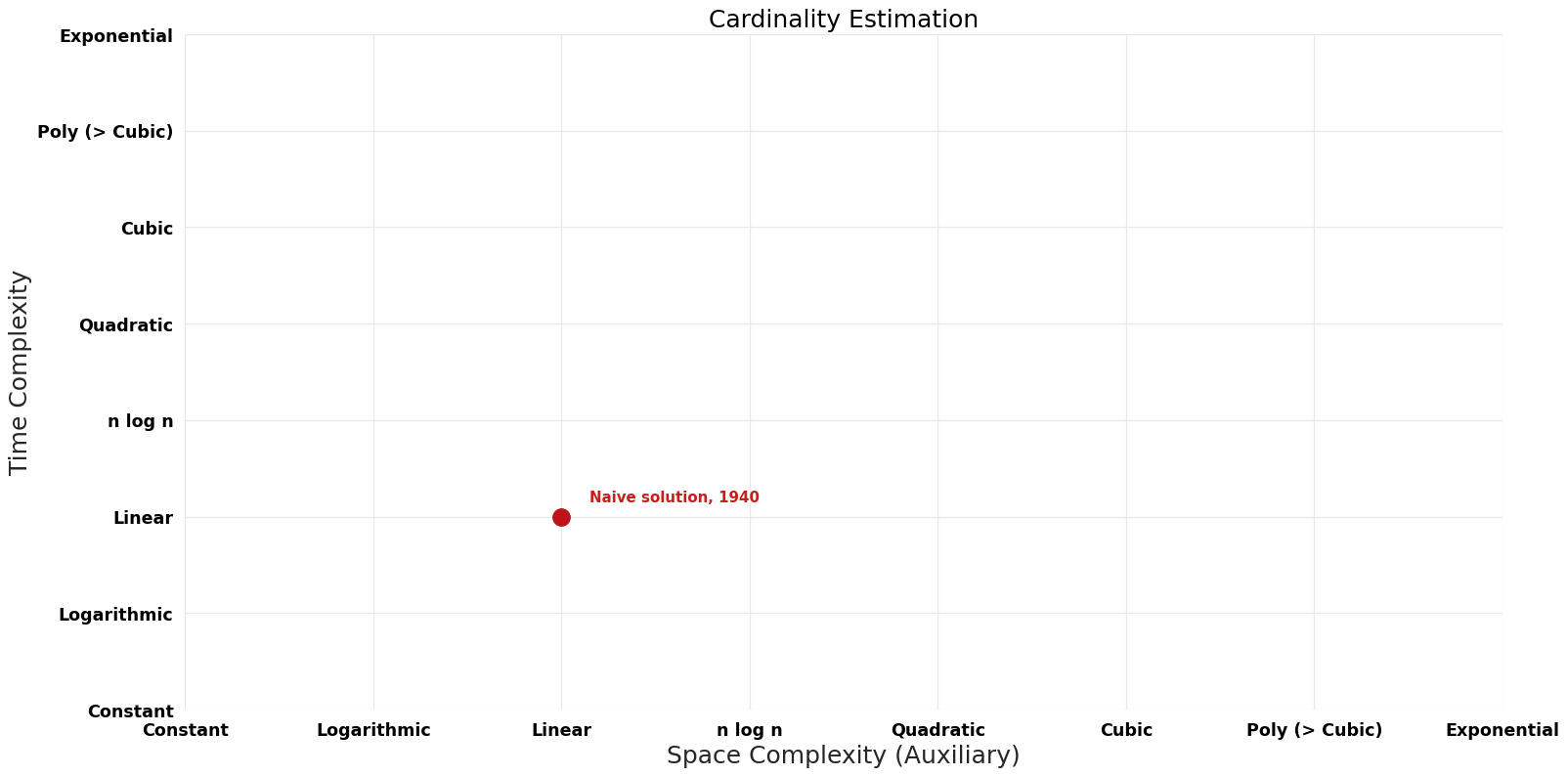Cardinality Estimation: Difference between revisions
Jump to navigation
Jump to search
(Created page with "{{DISPLAYTITLE:Cardinality Estimation (Cardinality Estimation)}} == Description == Given a multiset of (possibly hashed) values, estimate the number of distinct elements of the multiset. Of interest is minimizing storage usage. == Parameters == <pre>N: number of values in multiset n: cardinality of multiset (not known)</pre> == Table of Algorithms == {| class="wikitable sortable" style="text-align:center;" width="100%" ! Name !! Year !! Time !! Space !! Approxi...") |
No edit summary |
||
| Line 6: | Line 6: | ||
== Parameters == | == Parameters == | ||
N: number of values in multiset | |||
n: cardinality of multiset (not known) | |||
n: cardinality of multiset (not known) | |||
== Table of Algorithms == | == Table of Algorithms == | ||
Revision as of 13:02, 15 February 2023
Description
Given a multiset of (possibly hashed) values, estimate the number of distinct elements of the multiset. Of interest is minimizing storage usage.
Parameters
N: number of values in multiset
n: cardinality of multiset (not known)
Table of Algorithms
| Name | Year | Time | Space | Approximation Factor | Model | Reference |
|---|---|---|---|---|---|---|
| Naive solution | 1940 | $O(N)$ | $O(n)$ | Exact | Deterministic | |
| Flajolet–Martin algorithm | 1984 | $O(N)$ | $O(log n)$ | Randomized | Time & Space | |
| LogLog algorithm | 2003 | $O(N)$ | $O(log(log(n)$)) | Randomized | Time & Space | |
| HyperLogLog algorithm | 2007 | $O(N)$ | $O(eps^{-2}*log(log(n)$))+log(n)) | Randomized | Time & Space | |
| HyperLogLog++ | 2014 | $O(N)$ | $O(eps^{-2}*log(log(n)$))+log(n)) | Randomized | Time |


